Because a zan par is a beautiful, precious, rare and most of all true object.
Because a zan par has been created with great love and deep devotion.
Because it embodies centuries and centuries of Tibetan culture and thousand of books
on religion, medicine, history, sociology, ethnology, myths and legends, scientific therapies
and animistic superstitions : all of these and much more in just a few inches carved
into a single piece of wood that you can hold in your hand.
Because every zan par is an object not made to be sold, but to be entrusted to a holy person,
a Lama, who would use it for many different rituals and would always religiously keep it
wrapped in sacred cloths.
Because every zan par is a tool for prayers and rituals born thousand of years ago and alive
still today.
Because it is very likely that your zan par was one day secretly hidden away,
then dangerously taken from Tibet to Nepal or India by a refugee.
Because your zan par has tens, sometimes hundreds, of carved images.
These images are used as moulds to create with tsampa- a mixture of barley flour and water,
dried dri (female yak) cheese and sometimes milk and salty butter and sugar –
ritual offerings which may act
as a substitute for the real object or animal they represent.
Because every single image that you see on a zan par has its history,
its thousand year-old history, its precise aim. An aim which could be religious or ritualistic,
but also social or therapeutic; for example, it might relieve specific physical or psychological ailments
either of a single individual or a whole community.
And finally, because the zan par that you’re handling contains,
as in a jewel-case, the soul of an entire population.
And this soul – if you have the patience and the humility
to listen to it – this soul will talk to you.
Obviously all this applies if your zan par is a true zan par.
Not if it is a zan par made only to be palmed off to prying tourists,
bewitched by this exotic object’s mystery.
I would like to give you a few ‘tricks’, a few secrets found over many years
of study and travels, or – better, a few factual criteria to use when you pick up –
if you’re lucky – your true zan par :
If it doesn’t stink, it stinks !
To recognize a true zan par close your eyes and sniff.
A true zan par stinks.
It stinks just as a real yak stinks, as rancid butter stinks,
as life sometimes stinks when it is true.
After your nose, your fingers. A true zanspar asks to be caressed.
You cannot just look at it with detachment, coldly : your zan par is asking you
to skim along the lenght of it with the tips of your fingers.
In silence, with closed eyes, religiously.
A true zan par talks to your fingers because it is as silky as the most precious silk.
Judge if a zan par is true with your nose first, with closed eyes.
Study it with the tips of your fingers right after, eyes always closed.
With closed eyes, your concentration is deeper : the zan par will then talk to you
and you will be able to listen to it.
Only after the nose and after the fingers, only if it stinks and is silky,
only then can you open your eyes and look at it. Take lots of time.
Is it easy to see that it has been carved with love, with sincere passion,
with respect, with devotion, with deep faith ?
You don’t need to be an art critic to observe it,
you don’t need to know the Tibetan religion to understand it.
Everybody immediately identifies with a true zan par
because truth speaks immediately to everybody.

Look at its smallest, simplest figure.
The carving of just one image is enough to judge a zan par which has hundreds of figures.
In a true zan par nothing is rough or coarse, nothing is approximate, nothing is hastily carved.
Nothing is only ornamental or superficial. Even the most unskilled eye sees it.
Even a blind person immediately sees it, because the hyper-sensitive nose and fingers
of the blind immediately reveal the truth.
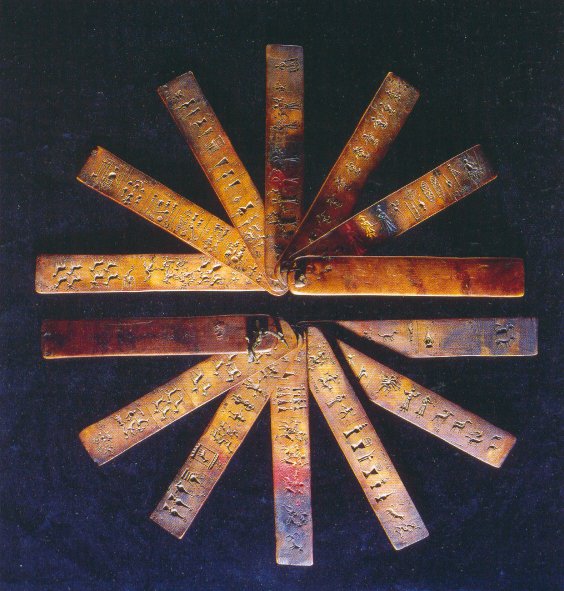
If it stinks, if it is silky, if the smallest of figures is carved with infinite care and passion,
then it is a “good” zan par, it is true.
A true zan par is beautiful because is true.
A true zan par is true because is beautiful.
A zan par is true and beautiful because it is silky and stinky.
If it doesn’t stink, it stinks.

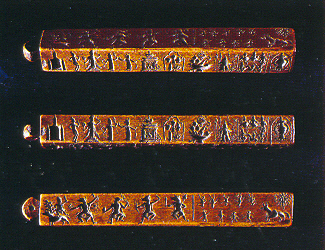

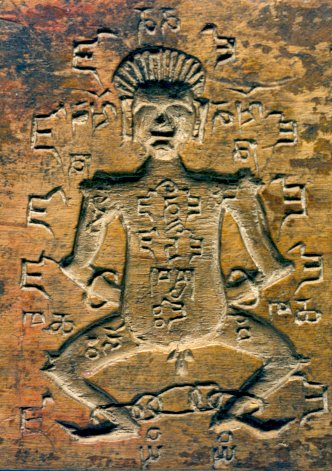
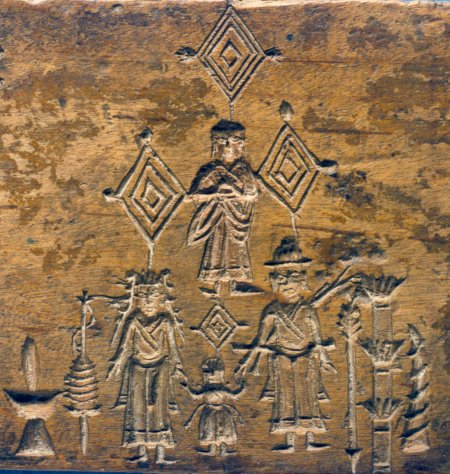

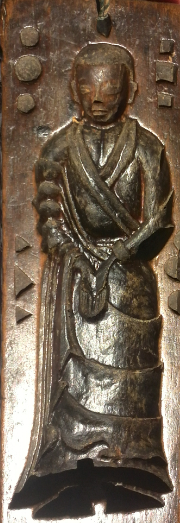


The text that I posted above is rashly and deliberately sensorial and emotional.
Absolutely NOT scientific.
The research I did on the spot in the Seventies of the last century and the creation of my small collection of zan par
would have not been possible without the priceless partnership of Chodup Tsering Lama.
It was only thanks to Chodup that it was possible to carry on a very difficult research
among reticent Tibetan refugees and to enjoy lengthy conversations with Lamas.
Only thanks to Chodup did I learn from a few Lamas the meaning of all the images
on each zan par and the specifics of the many rituals involved.
It was beautiful in those days to observe the profound devotion and sincere veneration
with which Chodup spoke to every Lama. Chodup even went to the point of stammering :
a way, I suppose, to physically express his deep submission and deference.
Recording our dialogues, photos of rituals usually not open to foreigners, collecting
of a few very old zan par: all this at the time was material meant to be published
in a monograph that unfortunately I never wrote.
But luckily, a few years later, with the modest help of my info and photos,
the most serious and cultured text on zan par was written by Zara Fleming.
At the time, Zara was responsible for the Tibetan collection at the “Victoria & Albert Museum” in London
and used to travel many times a year into the Himalayan regions.
As she still does. And Zara loves these wooden objects as much as I do.
Zara’s monograph was published by the Library of Tibetan Works and Archives
in Dharamsala with the scientific supervision of Erberto Lo Bue, an Italian professor:
Zara Fleming: “An introduction to Zan par”
in “The TIBET JOURNAL” Vol. XXVII nn.1&2 – Spring & Summer 2002 pp. 197-216
The following year Zara published :
Zara Fleming,“The Ritual Significance of Zan par”
in Proceedings of the 10th Seminar of the IATS Vol. 13: Art in Tibet, Leiden 2003, pp. 161-168.
A few pages in Italian are in:
Franco Bellino : “Stampi Rituali”
in Paolo Mancini “HIMALAYA MAGICA” – 1999 CREA pp. 30-33
Today, as far as I know, Zara is one of the world’s experts on the subject of Tibetan zan par.
In Venice, Michel Paciello of the ”Paropamiso Gallery” knows and sometimes offers true zan par.
In Paris, Francois Pannier, scholar and owner of “Le Toit du Monde Gallery” is currently studying zan par,
and it is very likely that he will soon publish something.
More : it might even happen that Francois, during the winter of 2015 in Venice,
will arrange an exhibition entirely devoted to these beautiful ritual Tibetan objects.
Zan par in Venice ! Perhaps.
P.S.
Tibetan zan par on The Grand Canal. Perhaps. But a few are already here
Well done Franco! You have captured the essence of a zanpar beautifully, one needs to appreciate all its many facets by touching, smelling, seeing and feeling. When I bought my first zanpar in 1973, it was the first Tibetan object that I had ever owned and I loved it on first sight, in particular discovering what all the many symbols meant and how the offering images were created and what uses they had. A true zanpar really is beautiful, but so often nowadays one comes across “fake” ones, hastily carved and without the precision and care used in the genuine article. I hope your web page will inspire many more people to love these beautiful portable and tactile wooden objects.
[...] http://www.francobellino.com/?p=2122#more-2122 [...]
I won’t say too much regarding your article except I completely agree – it is not in any way scientific.
After collecting dozens of zanpar in Tibet over many years not once did I use my olfactory sense to evaluate them for either age or authenticity?
Does this mean they are not authentic? Good Luck! – Robert (Bob) Brundage
[...] http://www.francobellino.com/?p=2122#more-2122 [...]
Dear Franco and Zara and Francois and Bob anyone who loves Zar Pan.. I too bought my first Zar pan in 1973 …. mine was from Dutch Bob in the Rose Garden in Kathmandu
and at once felt essence i had not known. I studied and graduated Univ of Hawaii in 1971 majoring in Asian Art and Philosophy and sculpture fine arts.
As soon as Bob handed the first stick to me.. i know magic resided within and upon it..I have since been fortunate enough to collect over 150 Zar Pan
and have plans to exhibit and publish on the subject.. welcome anyone to open source with me and bring more Tibetan Magic to planet.
Richard X Zawitz
rz@tanglecreations.com
Hi Richard,
great to know you and to see your creations.
I will forward your mail to Zara (who is now in Myanmar) and to Francois (who lives in Paris).
If you give me your Post address (San Francisco ? Hong Kong ?),
I’ll manage to send you a copy on paper
of the “Lettre” that Francois has published on his web site http://www.letoitdumonde.net
You can find on my web site a bibliography and a location’s list
of all the museums and private collections where there are zan par ..
If you like I might add to the list your collection.
If you have some photos of your zan pars, please send me some :
you can see almost all of my zan pars on the few texts (even if some are in Italian)
where you already did post your comment, a comment which I love
because opens a new friendship.
Come to Venezia !
Franco
I must study this hypothesis : sometimes the zan par with so many figures
and with hollows not so deep might have been used
not only to create dough images, but also
as an iconographic inventory, a catalogue of images for future zan par’s carvers.
Many many years ago I happened upon my first zanpar. I did not know what it was or where it came from. I only knew that it woke in me a kind of recognition. As I caressed it, I felt an awakening. Certainly nothing cold and hard like science but a dim and distant memory of having held it before. Since that time so long ago , that same recognition has led me to accumulate all manner of tibetan artifacts, including more zanpar. As strange as it may sound I have come to see my connection with these things as being akin to the tests for the inew incarnation of the Dalai Lama. Not that I was or am the Dalai Lama but like him I have shared past lives in tibet and I am comforted and made glad to recognize that in these objects. When I was younger I thought that a bit odd but now it seems possible and even likely that my love for these things was kindled by past experiences. Thank you for your feeling interpretation and the beautiful images of zanpars
Here > https://aurasiatique.fr/ < My collection of Zanpars. I love your post ! Thank you. Regards.
Hi. I lived in Hong Kong and traveled a lot there from 97 – 2000. Purchased these either in Hong Kong or China, don’t remember. Do you know anything about these Zan par? Actually I don’t know how to send photo. Do you have email
Hi all,
If you are interested in zanpar, can you write me : pifrey@orange.fr
I thank you Franco Bellino for his amazing passion for those tibetan molds ! The proposed classification is interesting.
Thanks for sharing.